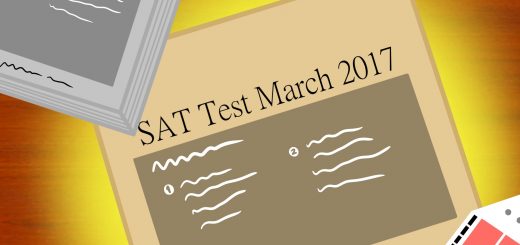SAT to be shortened and simplified: a small step in the right direction
On January 25th, The College Board, creator of the SAT, officially announced that several changes will be made to the test beginning Fall of 2023. Upperclassmen in the Conant community, and across the country in general, have put in many hours to prepare for the lengthy test just for it to be simplified for the current freshmen and high schoolers to come. While the SAT desperately needed restructuring, it is unfortunate and unfair to current upperclassmen that the new test won’t be given until fall of 2023. This leads us upperclassmen to wonder: why release this info so early, when it doesn’t apply to anyone for another year? It seems as if The College Board is dangling a carrot in front of high schoolers as an incentive for taking their test, but it’s just out of reach for the unlucky ‘22, ‘23, and ‘24-ers.
So, how did the SAT get to this point? Well, the SAT has been in use since 1926. It started off as an intelligence test given to immigrants in America to “determine their worth”. Since then, the SAT’s purpose has shifted to become a tool to assess how prepared high school students are for college in comparison to their peers. Although many schools have recently become test-optional, many still use the SAT as a deciding factor when admitting undergraduate students.
For this updated version of the test, some of the changes include shortening both the amount of time allowed and the number of questions, having more time per question, allowing calculators for the entire math portion, and conducting the test digitally instead of on paper. These changes are designed to make the testing process easier and more secure to prevent cheating. The efficacy of the old test as a whole has been questioned by parents, students, and educators for many years, so these new changes are well overdue.
The SAT is known to be full of wordy traps and wrong answer choices that seem perfectly acceptable, all designed to trick students rather than test their knowledge of the topic at hand, rendering it ineffective. While it is important to have a method to compare students across the board through one assessment, the length and format of the SAT makes it difficult for students who may struggle with shorter attention spans or excel in other subjects not tested on the SAT.
The shortened digital test, only two hours long instead of three, will contain a smaller question to time ratio. More time for each question will benefit those who may read at a slower pace or have test-anxiety.
The College Board ruled that calculators will be allowed for the entire math portion of the test, preventing simple computation mistakes that tend to occur on a time crunch. As a result, the complexity of the questions may increase in order to test actual skills (not just students’ abilities to push buttons in a calculator), so the amount of time spent studying may actually stay the same, although it is hard to know without more details from The College Board.
While a digital format may bring on concerns about cheating or difficulties accessing the internet, the new test accounts for all of this. The test will still be given in a proctor-student format with the same amount of supervision. It can be taken on personal devices (excluding phones), however if a student does not have access to one, The College Board will provide one for use on test day.
The new test will save lots of time, too. It can be graded digitally, allowing students to get their scores in a matter of days rather than months. This removes the stress of waiting for a score, and can speed up the score sending process for those who are applying to college. It also prevents machine-related issues when scanning bubble sheets. Students who have already taken the SAT know that bubble sheets have been a large annoyance when taking the test, especially if you skip a problem and forget to skip a space on your bubble sheet.
While all these changes are great, it feels frustrating to high school juniors and seniors that we won’t catch the same break that younger classes are. Many hours have gone into studying for the current test, which seems wasteful now that an easier version is falling into the laps of other students. A lot of weight is put on standardized test scores, even if they don’t accurately assess academic capability as well as other methods do. This very well could explain why only 44 percent of students applying to college this year have chosen to submit their SAT scores to their prospective schools.
A common misconception has been that the SAT will only be temporarily digital, because of the COVID-19 pandemic. However, that is far from true. The new form of the SAT has been in the works for the last few years, and has been given to students as a trial test recently. The transition to the new test is not set to take place until 2023, meaning the switch has little to do with current global health concerns. The College Board intends for this to be a permanent switch if all goes well, according to their announcement.
Standardized tests such as the SAT do play a large role in post-high school decisions, but the process of taking them does not need to be as difficult and stressful as it has been. Reducing levels of stress linked with the test will encourage more students to take the SAT and produce higher scores. The class of 2025 and beyond should anticipate great things from this new and improved SAT.




Recent Comments